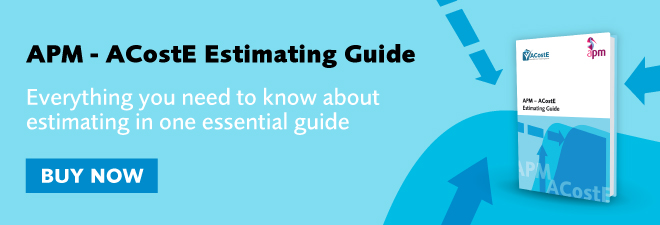Three ways to approach cost estimation

Underestimate the costs of your project, and it could be dead in the water. Back in 2001, the National Audit Office found that bad cost estimation was the reason for 70 per cent of public sector construction project failures, or blown budgets. KPMG’s survey in 2015 backed up those findings.
Cost estimation is a tricky thing to get right – it will always be speculative, based on what you know at the time. They’re also vital if you want to give your project focus.
You may deploy different cost-estimation techniques at different stages in a project’s development, and it’s important to revisit your estimations and revise them as the project goes on. There are three main approaches to estimating your costs – here’s how they’re best deployed. These are explored in more depth in the APM-ACostE Estimating Guide.
1. The top-down approach
Top-down estimating is exactly as it sounds – you review the overall scope of your project, identify the major elements of the work and estimate them separately from the rest of the project.
A top-down approach is frequently used for creating rough order of magnitude (ball-park) estimates at an early stage of the project, when the level of detail available is limited (they can also be used for validation purposes). Top-down estimates generally take less time and effort to produce than bottom-up estimates (see below).
The main benefit of top-down is the chance to use more holistic data from previous projects or products, including unmitigated and unforeseen risks, and scope creep. This can help reduce the risk of overlooked work activities or costs. As a result, top-down estimates are typically larger numbers than those created by a bottom-up approach.
2. The bottom-up approach
In a bottom-up approach to estimating, the project team breaks the client’s requirement down, identifying the lowest level appropriate to create a range of estimates, covering the project scope based on the task definition available. A bottom-up approach requires a good definition of the task to be estimated; it is frequently referred to as detailed estimating or as an engineering build-up.
The level of detail available to you will be influenced by the maturity of the project, product or service and the quality of the data collected in the organisation. For very immature projects with little definition, a bottom-up approach is probably not the right way to go.
Bottom-up estimates are at a level that feels more tangible than those created using the top-down approach. Bottom-up estimates are often used to gain stakeholder buy-in as a result. However, as the approach focuses on the aggregation of smaller estimates, there is a higher risk that these will exclude any allowance for emergent work (scope creep).
Bottom-up estimates are usually based on the most likely values for low-level activities. As a consequence, it is not unusual for bottom-up estimates to be lower in value than top-down estimates. Lower level baseline estimates typically skew towards the positive – ‘most likely values’ are inherently and implicitly optimistically biased.
3. The ‘ethereal’ approach
In some cases, you will need to accept estimated values into the estimating process. These values are often created by an external source taken on for usually low-value elements of work, or by other organisations with acknowledged expertise, such as vendors, catalogue prices or subject matter experts.
That external source provides their own estimation of their costs, using their own methods. That estimate is un-auditable and has to be accepted at face-value. Your estimates shift based on those quotes and costs with a degree of control removed.
The ethereal approach is generally a last resort, ideally reserved for low-value elements of work or situations where a robust estimate is not considered critical. However, this approach may be the only one available in some special circumstances, such as projects where time and resource is limited, or when a single source specialist supplier involved in the project’s delivery.
For more advice on cost estimating for projects, get APM and ACostE’s cost estimating guide here.
You may also be interested in:
- Getting involved in the project management community
- Listening to the latest project management podcasts
- Refining your project knowledge in APM Learning
- How to minimise cost risks in projects


0 comments
Log in to post a comment, or create an account if you don't have one already.